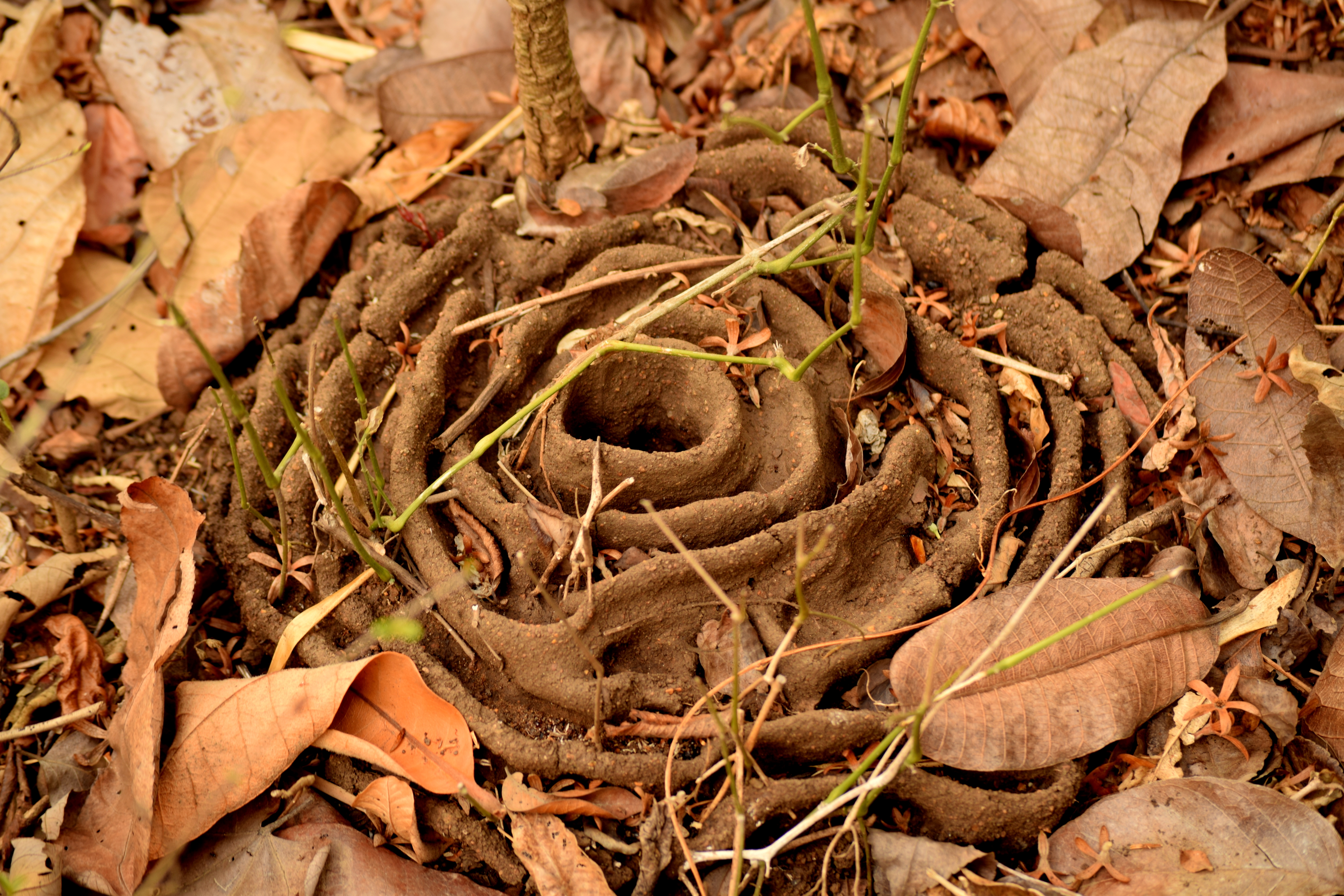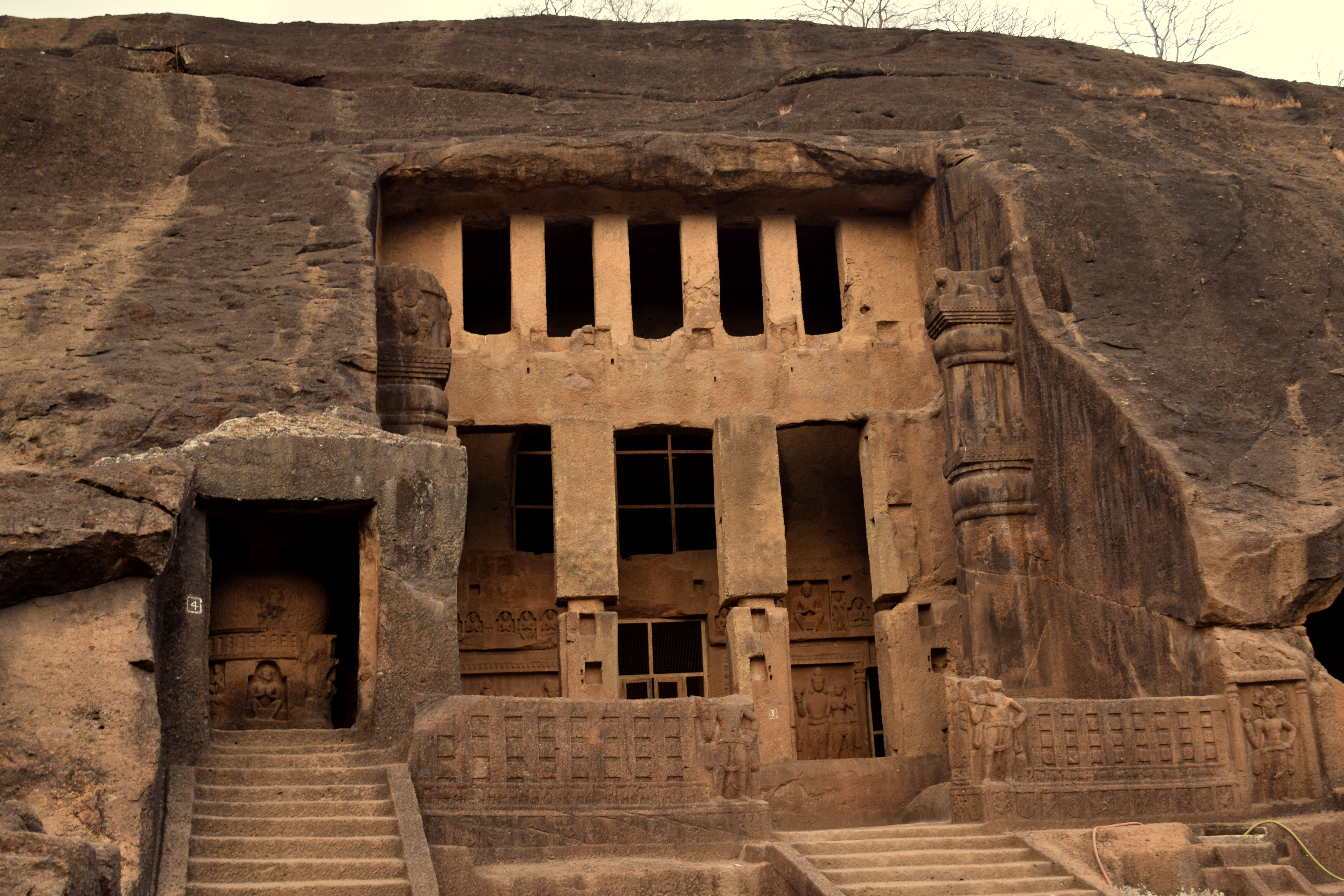Yes, I am talking about a real jungle and not the clichéd concrete jungle, which has mostly become synonymous with our cities. Wherever you are in Mumbai, whichever suburbs, you are never too far away from a healthy, thriving National Park. Sanjay Gandhi National Park is a 40 sqaure miles of green life, in the middle of the burgeoning, sprawling grey metropolis of Mumbai. A sprawling neighbourhood with a line of tall apartment buildings stand just opposite the park border, making the boundaries between the wilderness and the city bleak and dangerous.

A thriving Sanjay Gandhi National Park in the middle of the burgeoning, sprawling grey metropolis of Mumbai
The park living in the suburb of Borivali, is a home to over 40 leopards, more than 150 species of butterflies, around 40 types of mammals, different types of spiders, the ‘karvi’ shrub that blooms only once in 8 years and over 1000 types of plants.
Narrow paths enveloped in silence and woods on either side greeted us as we drove through the National Park. Now and then, the silence was broken by squeals of Rhesus monkeys or bleats of goats, foraging for some food and adventure. It was hard to believe that we were just half an hour away from the hum and clutter of 20 million people of this maximum city. And the deeper we went, the deeper we felt the connection, and were soon a part of this jungle in the backyard.

Brightly coloured male of a lizard species in Sanjay Gandhi National Park

And a dull coloured female
I had taken to the nature trail organized by the SGNP forest department. As day paved way for the evening, our five mile trail began, led by our guide Santosh, who probably could read signs as well as I can read books. We walked in silence, gingerly passing through the ‘wait-a-bit’ thorny bushes, reading signs, stepping carefully around the glistening rocks on the dry beds of forest streams. We weren’t tracking leopards, we were there to enjoy the lesser noticed residents. Most of the walking was on uneven landscapes, like walk uphill, breathe in the beauty of the valleys and then come downhill to live it. You only get to know the forest when you walk. Setting off in the company of a naturalist, tramping through dense forests and seasonal streams, with you guide reeling off names of trees, which you might have cared to know while in a jeep safari. There’s always time to stop, breathe the jungle air, be a part of it, smell the wild flowers, gaze at the ants at work, play with butterflies, observe the micro-fauna and study the littlest of action that happens on ground. In this unknown zone, even the slightest of movement by the most harmless of creatures can set your heart racing. That’s the thrill, when you beat your fears to know the unknown and venture out to see the unseen.

Exoskeleton of a cicada. Cicada are the longest living insects
I looked around, an expansive green space; my city deadened senses woke up and I began to register the different sounds and smells. A brahmany kite hovered over us, as a jungle spy. Birds we saw plenty, flocks flew over us in droves, piercing the evening with their conversations. Walking is the only way to experience this tranquil area, and soak in the park’s biodiversity. I focussed on the little creatures, the myriads of species of butterflies that flew around and occasionally greeted by brightly coloured male lizards, trying to woo the dull females.

Nest of the ferocious Pagoda ants

And then nest of the mild harvest ants
Monsoons are especially great for such nature trails when the flora is at its blossom and the insects and reptiles become more common with the easy availability of food. The Shilonda trail organized during monsoons takes you through the unseen curves of the forests, bringing you closer to hundreds of arachnids and crustaceans. There will be crabs, spiders, moths and many other animals that take you along for a walk and you will be able to catch a glimpse of the caterpillar of the largest moth in the world – the Atlas (Attacus) moth. And an encounter with the ferocious Pagoda ants will get more common, bear caution when you are around them. And if you a spider lover like me, try the Malad trail (which I have to try too), you will find webs all around you, you might have to walk through them. A well trained guide of the SGNP will be there to accompany you and share his nature notes.

And we found her near an abandoned tunnel
Our nature trail ended at Kanheri caves, excavated around 1st BC to about 11th AD. The caves represent both the Mahayana and Himayana phase of Buddhism. Buddha is represented both in the form of stupas and footprints and in anthromorphic images. Chaitya griha or the prayer hall, a huge dining hall with a low seating long table on two sides, underground water tanks and whole lot of viharas or living quarters for the monks with benches in outer courtyards send strong cues that the caves weren’t a secluded place meant for travelling monks or religion, rather it was a permanent settlement.

And the Kanheri caves

It’s really amazing to see a forest whose bio-diversity can overshadow that of many European countries, survive and grow within the most populous city of India and how well the city has learnt to live with its residents. Just take any Sunday to get lost in this natural amphitheatre around the Vihar lake, the bountiful wild trails, the voyage to the highest point of Mumbai or the monsoon walks through Silconda trails, this park has many roads to follow, get lost and rediscover the maximum city.
(Check this page for more information about the trails offered by SGNP)






Another v interesting post. Unbelievable mumbai has such a jungle.. Tht too wid leopards
Thanks, if you are in Mumbai do pay a visit
Yups defn. Tho i m frm delhi n been 2 mumbai 3-4 times n have even heard of straying leopards but never of da jungle
Delhi has its own Asola Sanctuary but SGNP is amazing. Quite unimaginable that such a healthy forest can exist in Mumbai and it has quite a good density of leopards.
I like your clicks
Thanks Vishal
Travel, create new stories and find a home at Backpacker Panda hostels . Find the perfect and hospitable hostels here: https://backpackerpanda.com
Travel, create new stories and find a home at Backpacker Panda hostels. Find the perfect and hospitable hostels here: https://backpackerpanda.com